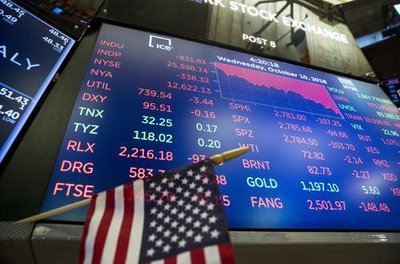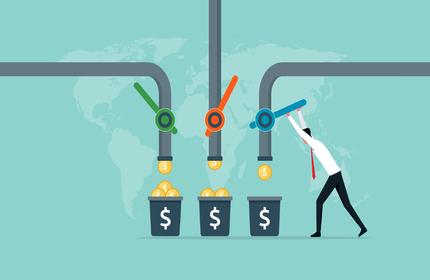After the heavy blow on April 2, global stock markets have become particularly sensitive and uneasy. That day, the plunge triggered by tariff policies was like a sudden blizzard, sweeping the market from the cosy garden of a bull run straight into the icy cave of a bear market. The Nasdaq and Russell 2000, these two veterans, have each lost over one-fifth of their value so far this year. While we cannot yet definitively declare a confirmed "bear market," the market's "temperature" has dropped, entering a phase of adjustment, with uncertainty lingering like persistent smog.

However, the financial market is like a giant organism with rhythmic breathing troughs that do not signify death, but rather a deep breath. Looking back, no matter how fierce the storm, bear markets and correction periods are never eternal. They're more like acute illnesses than chronic diseases- while the onset is intense, recovery usually comes swiftly. Market analysts divide such "market colds" into three categories: one caused by internal weakness leading to structural collapse, such as the 2007-2008 crisis that nearly sent the global financial system into shock, and another caused by
"climate change," like rising interest rates or economic cooling, leading to cyclical downturns, and finally, one triggered by external shocks, sudden policy storms, for example. This third kind, though ferocious, is often the quickest to heal.
In this latest bout of market turbulence, the situation resembles the third category. A sudden policy punch spooked the market into retreat. But precisely because of this. The market's self-healing power remains intact. Shock-type events often don't cut deep or last long. What's truly concerning is whether this "cold" might evolve into a cyclical "flu," or worse, mutate into a structural "disease." With signs of economic slowdown becoming more evident, investors are beginning to worry whether what was supposed to be short-term pain could drag into a prolonged struggle. While bear markets are scary, their average lifespan is not long, often just a few dozen days, and most recover within a year. It's like after a high fever breaks, a bowl of hot soup and a good night's sleep can restore vitality. To determine when the market might "get back on its feet," Oppenheimer has laid out four signals they're watching closely— these four signals are like the market's "talking in its sleep" before recovery, worth paying special attention to.

First is the attractiveness of prices. If the stock market is a giant marketplace, then valuations are the price tags. Though some tags have dropped from "sky-high,” they’re still pricey enough to make buyers hesitate. Next is the sentiment thermometer of investors’ current positioning is like hands shrunk deep into winter coat pockets, signalling widespread pessimism and low risk appetite. If this "chill" starts to warm, it may suggest confidence is returning. Then comes the "fire" of policy. Whether it's the warmth of interest rate adjustments or the breeze of trade relief, either could light the fuse for a market restart. The final signal may sound academic, but it is quite simple: just like a car needs not just to move forward but to accelerate, only with stronger momentum can the market rebound with real vigour. Of course, don't expect the economy to suddenly shoot up like it's been injected with adrenaline. Especially if corporate profits shrink and the economy declines, this "shock-type cold" could easily morph into a more stubborn cyclical "virus." But one small comfort is that, for now, there are no signs of deep structural erosion. Overall, corporate debt remains manageable, and banks, unlike in the last financial crisis, still hold sufficient.
"immunity."
All in all, although U.S. stock valuations are still on the high side, the dawn of recovery may already be brewing on the horizon still out of sight, but worth the wait.


Decoding the Reverse Financial Planning Trend

Capital Gains: An Active Income Approach to Building Wealth

Premium vs. Practical Credit Cards

The Future of Cryptocurrency: What You Need to Know in 2024

Financial Harmony: Institutionalizing Family Finances

The Future of Financial Services in the Age of Big Data

How to Grow Assets Steadily for Financial Freedom
